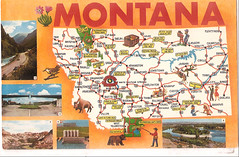 Montana makes it really easy for people to learn more about the eligibility requirements of their Medicaid program. Just go to the website for the Montana Department of Health and Human Services, and you can quickly find what you want to know. The state has several parts to their Medicaid system.
Montana makes it really easy for people to learn more about the eligibility requirements of their Medicaid program. Just go to the website for the Montana Department of Health and Human Services, and you can quickly find what you want to know. The state has several parts to their Medicaid system.
Medicaid is a public, (or government run) form or health insurance. It is designed to provide an affordable form of health insurance for people who are low-income, and who cannot afford to purchase health insurance from a private company. Medicaid is funded by both the federal government and the government of an individual state.
In Montana, the Medicaid program is run by the Montana Department of Public Health and Human Services. The state of Montana pays around one-third of the cost of the Medicaid program and the federal government pays for the rest. To apply for Medicaid, you can go to your local County Office of Public Assistance, or you can mail in your Medicaid application. You can also apply by having a telephone interview.
The eligibility requirements for Medicaid in Montana are listed, very clearly, on the website for the Montana Department of Public Health and Human Services. To be eligible, you must be a Montana resident. You must have proof of U.S. citizenship or alien status and identity.
Your income must fall within the financial requirements for the program. This takes into account your income as well as your resources. You also have to fall into one of several specific groups: parents (or other related adults) with dependent children under age 19, children, pregnant women, women diagnosed with breast or cervical cancer or pre-cancer, people at 65 or older, or people who are blind or disabled.
Montana has Full Medicaid and also has Basic Medicaid. In order to get Full Medicaid coverage, you must be under the age of 21 or over the age of 65. People who are blind, disabled, or pregnant can also qualify.
The difference between the two types is the amount of coverage you can get. Basic excludes coverage for dental care, audiology services, vision exams, eyeglasses, durable medical equipment, and personal-care services in your home.
Full Medicaid, on the other hand, provides quite a bit more coverage. It could cover things like ambulance, anesthesiology, blood lead testing, dialysis, durable medical equipment, prescription drugs, family planning, eyeglasses, hearing specialists, home health services, lab work, mental health services, occupational therapy, pregnancy and childbirth care, speech therapy, well-child checkups, and more.
Image by koiart71 on Flickr

